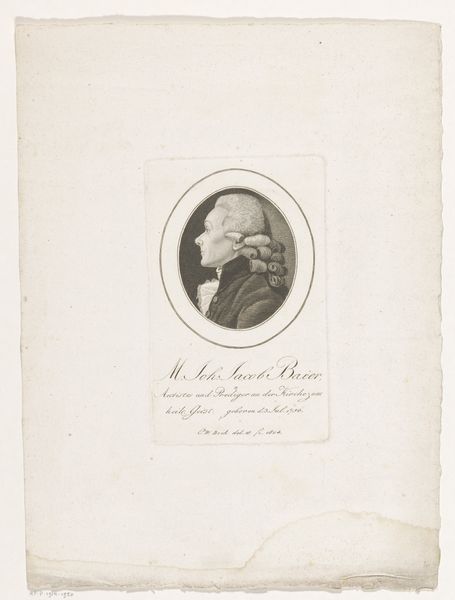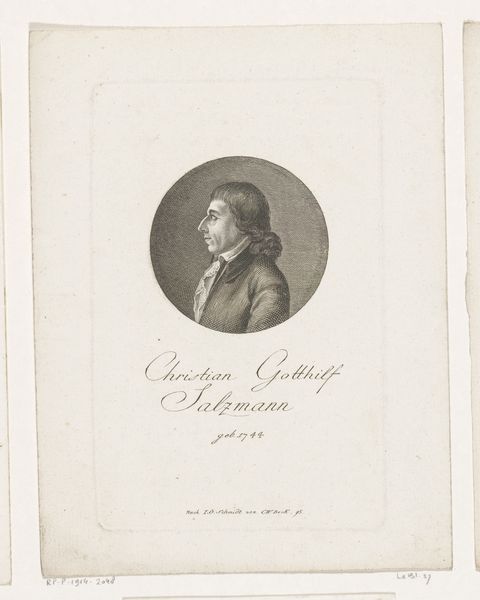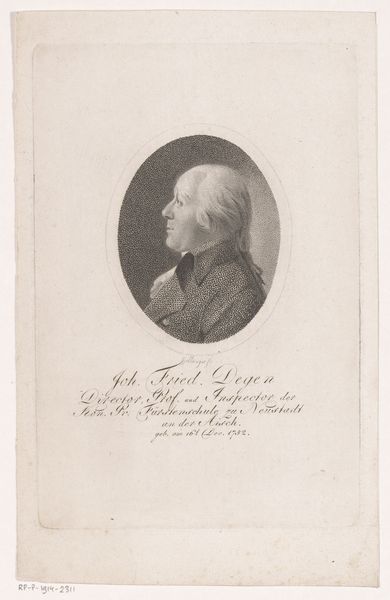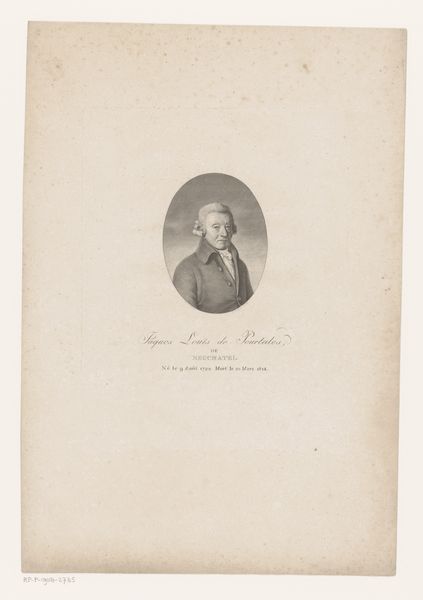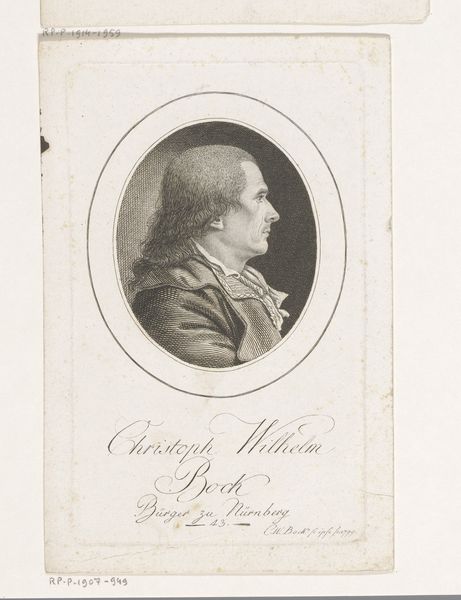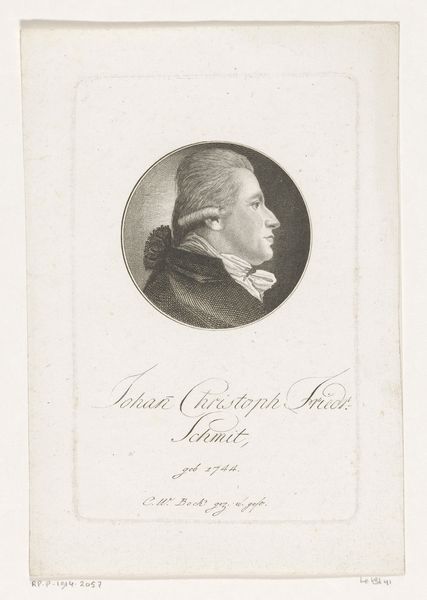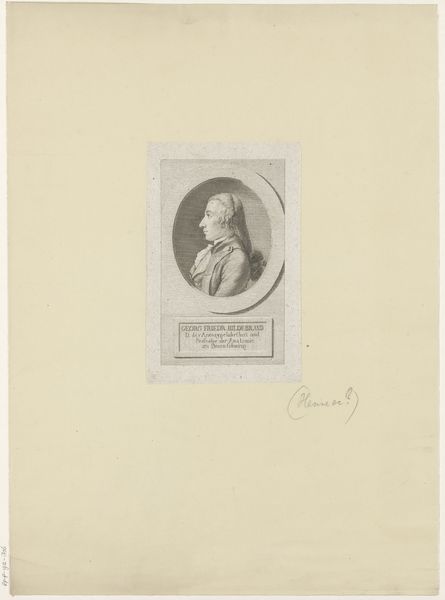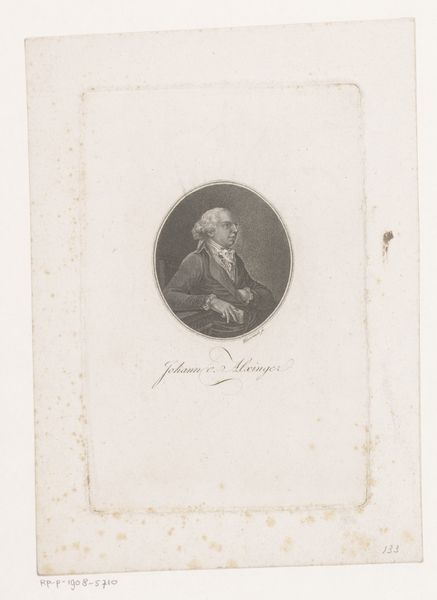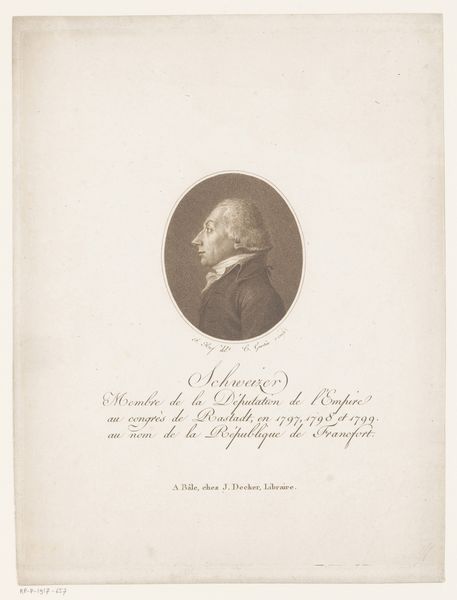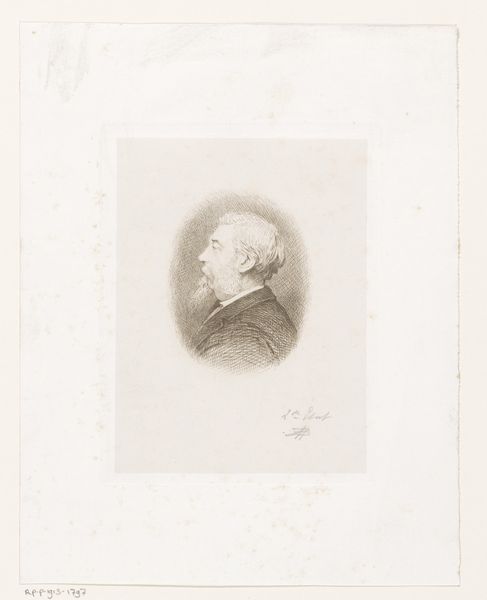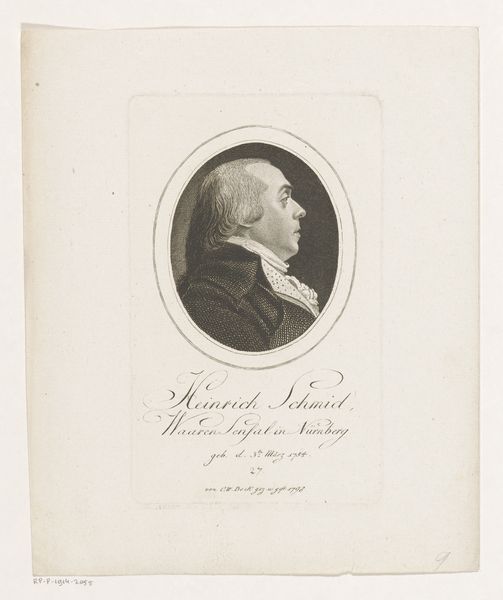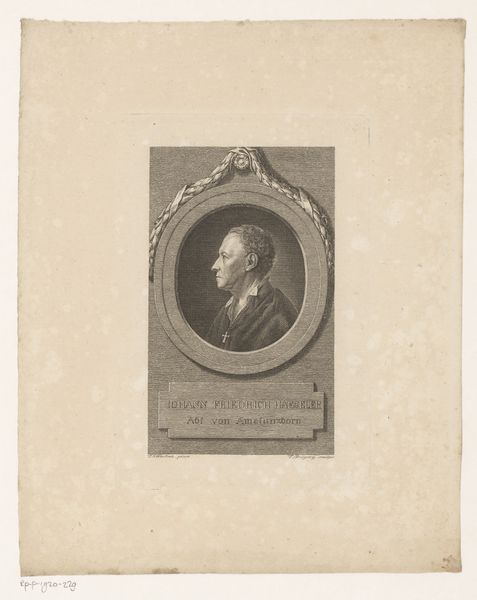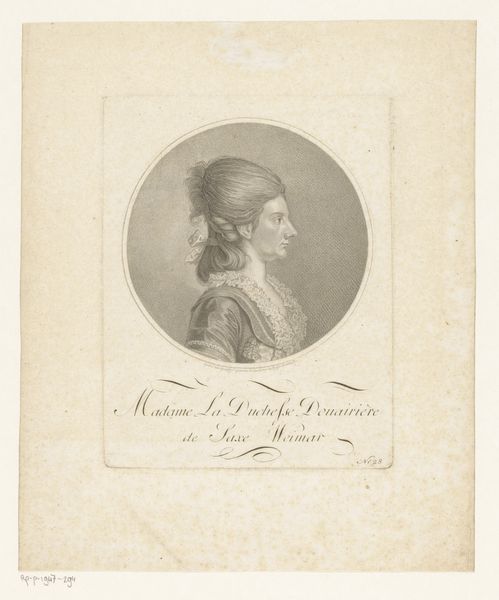
print, paper, engraving
#
portrait
#
neoclacissism
# print
#
paper
#
form
#
line
#
engraving
Dimensions: height 152 mm, width 96 mm
Copyright: Rijks Museum: Open Domain
Editor: Here we have a print from 1793, a portrait of Albrecht Christoph Kayser by Christoph-Wilhelm Bock, currently housed at the Rijksmuseum. It’s a fairly simple engraving on paper, but I’m really struck by the intensity of the gaze even in profile. What can you tell me about it? Curator: Oh, intensity indeed! It’s funny, isn’t it, how a simple line engraving can convey such depth? I find these Neoclassical portraits incredibly evocative, little windows into the past. Look closely at the way the engraver used line to define Kayser's features. Do you see how much detail is actually conveyed with relatively little information? It's almost… poetic minimalism! Editor: Poetic minimalism… I like that. So, what was it about Neoclassicism that led artists to embrace such restraint in portraiture? Curator: Well, think about what came before – the Rococo period, all frills and ornamentation. Neoclassicism was a deliberate turning away from that, back to the perceived purity and order of ancient Greece and Rome. In portraiture, this meant emphasizing idealized form and character. Do you see echoes of ancient cameos in the profile and circular framing here? Editor: Yes, absolutely! And that connection to the classical world adds a layer of dignity and timelessness, doesn't it? Curator: Precisely! It's less about capturing every tiny detail and more about presenting a vision of someone of substance, someone whose qualities endure beyond the fleeting moment. Though I imagine Kayser would have had feelings about it all! What feelings do you imagine he harbored? Editor: Hmm, I wonder. The timelessness you mentioned has changed my appreciation, it almost immortalizes him through art. Curator: That's it entirely. Art for immortality – if we're lucky!
Comments
No comments
Be the first to comment and join the conversation on the ultimate creative platform.
